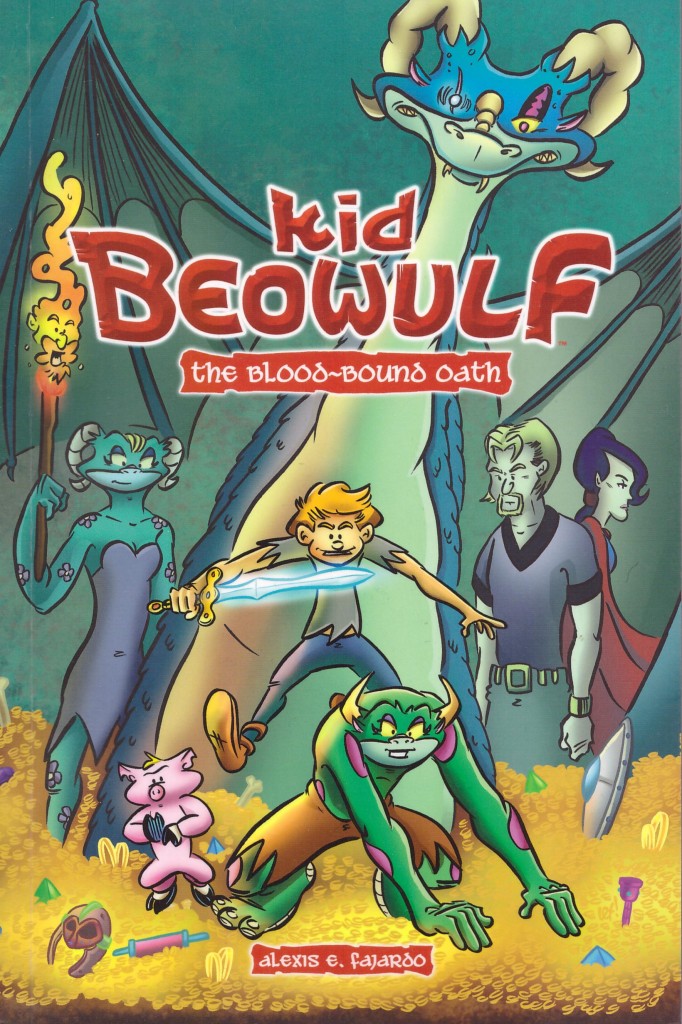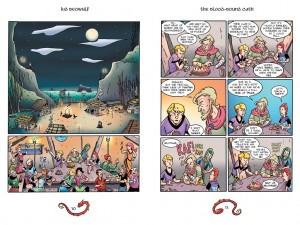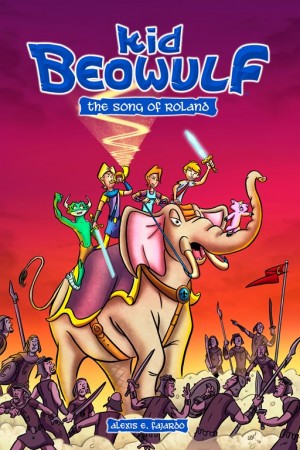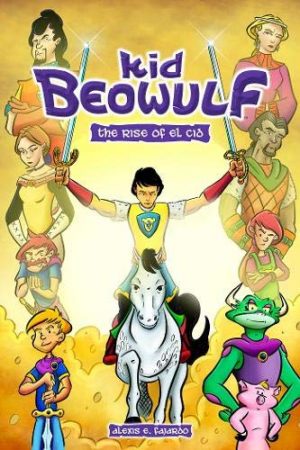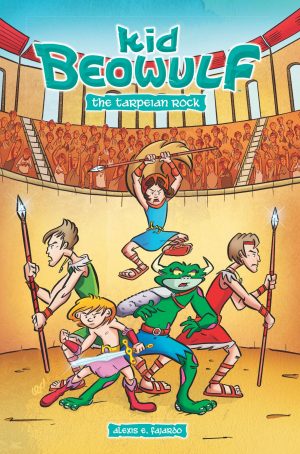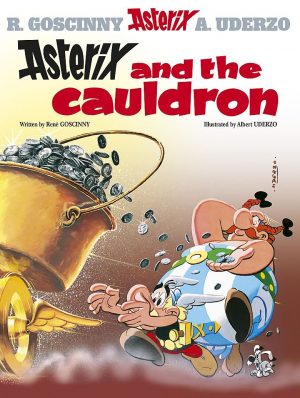Review by Ian Keogh
Taken cold, extrapolating the Viking legend of the monster-slaying Beowulf into comedy adventure for children via spotlighting his early years is certainly not the most obvious route to commercial success. Furthermore, anyone who reveres the original telling will be appalled at the shorthand rhyming version over the opening eight pages. Alexis E. Fajardo gradually wipes away misgivings, however, by dragging readers into his solid story, opening with tensions between communities and the headstrong nature of youth that lead into the introducation of characters known to those familiar with Beowulf’s story.
The opening chapters focus on the sons of King Shild and their contrasting personalities. The headstrong Hrothgar is infatuated with a young women just moved to a neighbouring community with which a fragile peace endures, while the more considered Holger is loyal, but knowing. A considerable period is spanned, new generations emerge, and it’s well beyond the halfway stage until we actually meet Beowulf, yet there’s enough adventure to ensure this is no hardship.
As Beowulf hasn’t yet slayed them, Fajardo has a cast of terrifying monsters to play with, although as this is all-ages the horror is dampened down into potentially threatening via the cartooning. They’re provided with sitcom style personalities, are involved throughout and have some surprisingly touching scenes. Mythologies are mixed as a significant element from The Iliad is introduced, and portions of the Beowulf saga that occurred in the past are shown as they take place, such as the construction of the great hall.
Fajardo’s cartooning is in the European style, and characterised by a busy looseness that excels at setting his cast in motion. It’s adaptable enough to cope with the more tragic moments without robbing them of emotional effect, and copes equally well with the conversational scenes.
The plots are set up for the long term, the second volume The Song of Roland previewed in the back, and as most younger readers won’t be aware of the eventual fates of the cast this works fine. There is a lot of background material provided also, some of which does disclose the eventual fates of the dragon, the sea hag and Grendel. While its unlikely any young reader of Kid Beowulf will be picking up Seamus Heaney’s translation of the original saga, for a decade or so anyway, it’s nice to see that and others acknowledged along with Fajardo explaining his creative process and homages.
Any misgivings about the concept rapidly evaporate as this good-natured adventure continues. By the concluding pages all the major characters have been introduced, and the potential Fajardo realised all along is apparent to all. Any child reading this will have their imagination opened, learn a lot and count the days until the sequel arrives.
